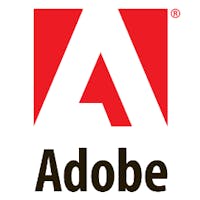Back in 1997 when I started working at Balboa High School in San Francisco, I had a total annual budget of $150 to design and teach my first art class. Since then, my colleagues and I have had to work hard and be creative to expand our programs and provide our students with a strong creative arts education.
It’s definitely been worth it. In the span of two decades we’ve gone from having no arts program whatsoever to launching the Creative Arts for Social Transformation (CAST) Academy—a visual and performing arts program with an emphasis on career readiness. Back then we were one of the lowest-performing schools in our district. Now we are a California Department of Education Model Demonstration Site for Arts, Media, and Entertainment and Career and Technical Education. And today we’re getting ready to build our own makerspace on campus.
How did we do it? And more importantly, how can you do the same at your school—so that together we bring the benefits of media literacy and maker education to students across the country?
To make it happen, you need to think and act like a maker. My student makers are can-do types. They’re always willing to try new things and use all available resources to solve problems and reach their goals. Here are my suggestions to get your maker program off the ground:
1. Start small and keep going
Four years ago, a student approached me asking if I could start teaching 3D printing at our school. We had nothing in the way of resources, but the two of us just decided to start learning and do it. We worked together as a team during lunch periods. We partnered with Type A Machines, a local 3D printing manufacturer from TechSF makerspace, to get access to a printer. And we used free software to build our 3D models.
Once we’d demonstrated to the administration that we had a plan, we got funding for our first printers. We created an after-school program that has continued to grow, and now students do 3D modeling and printing in a lab that has five or six printers of all sizes and complexities.
Four years ago, my student and I could have easily decided that it was too difficult and expensive to bring 3D printing to our school. But because we were willing to start small and move forward incrementally, we managed to pull it off.
2. Build community partnerships
Type A Machines is just one of many Balboa partners. San Francisco Museum of Modern Art (SFMOMA) also supports Balboa by providing cross-curricular arts education programs for our staff as well as field trips, speaker visits, and other activities for our students. Another local partner is Walmart. Our CAST Academy seniors create business plans based on their skills and experience, and a team of professionals from the nearby @WalmartLabs invites the students to come in and present their plans, Shark Tank–style, to get valuable feedback.
Local businesses and organizations are often eager to help bring resources to students. When planning your makerspace, reach out to contractors, hardware stores, and other businesses in your neighborhood or city to see if they’re willing to partner with you.

3. Make the most of free resources
There are a lot of great free resources out there for teachers. One website I’ve used and helped shape is CTE Online, a career and technical education resource. In addition to animation course outlines and lessons in its Arts, Media, and Entertainment section, the site offers a wealth of content for every industry. And as we’re learning the art of 3D printing, my students and I have also made good use of Thingiverse, an online community for finding and sharing 3D printable things.
My favorite free resource is the Adobe Education Exchange (EdEx). It’s an online learning community focused on Adobe products that offers free professional development, useful curriculums, lesson plans created by other teachers, and lots of ideas and inspiration. EdEx is the perfect place to explore when you’re thinking about creating educational programs for your makerspace.
I rely on the EdEx for three things:
- Great ideas for how to use new tools and technologies in my classroom. If I find an interesting tool but I’m not sure how we can use it at our school, I’ll look on the EdEx. When I first learned about Adobe Spark Video, a simple free tool for making animated videos, I found structured lesson plans from a foreign language teacher who was using the app. I passed them along to our own language teachers, who started using them right away. The EdEx also keeps me posted about informational webinars, like this upcoming Thought Leadership webinar that will be devoted in part to exploring creative teaching and learning spaces on higher ed campuses.
- The opportunity to connect to a network of educators around the world. Teachers on the EdEx are all involved with communication, digital media, technology, and the Maker movement; I get inspired seeing what they’re doing in their schools. I also like looking at curriculums and lesson plans posted by teachers in higher education—I’m always adapting their ideas for my school.
- The chance to learn advanced skill sets. The EdEx offers online professional development courses and workshops in a variety of subjects that interest me and my students. For example, there’s a course in game design that I can’t wait to take.
4. Apply for grants
We have a building on campus that was appropriated for district offices 15 years ago, and we thought it would be a perfect site for our makerspace. So we applied for a California Career Technical Education Incentive Grant (CTEIG) and just got funding this month to reclaim the building and make it over. We’ll move into the space during the 2016-2017 school year and begin using it for our after-school programs, CAST Academy, and Game Design Academy. The following year, we’ll launch new course offerings. We plan to use the makerspace for 3D modeling and printing, woodworking, screen printing, robotics, and more; we’ll use the grant money to buy equipment, develop curriculums, and provide professional development for our staff.
There are a lot of grants available for STEAM-related initiatives. I always start by searching the U.S. Department of Education grants website, but a Google search will help you find other opportunities as well.

5. Tell your story
By sharing both the process and outcomes of what students make, you build a culture at your school and invite others to join. Document along the way with photographs, video, and even project artifacts that missed the mark. Share the story of your journey on your school website and through in-school broadcasts, district announcements, and public relations channels. Post on social media using various hashtags to highlight events and activities with local partners.
Creating a makerspace isn’t easy, and it isn’t cheap. But if you think like a maker and stay determined, put in the work, and take advantage of the best free resources available to you, you can build a maker culture at your school. And all of your students will be better for it.



